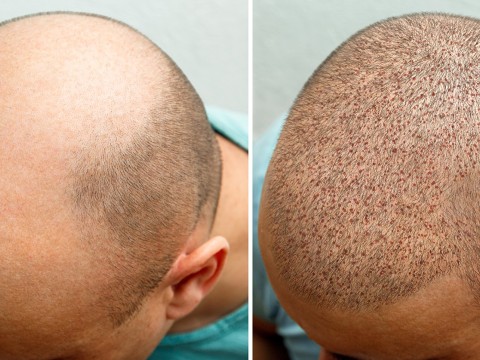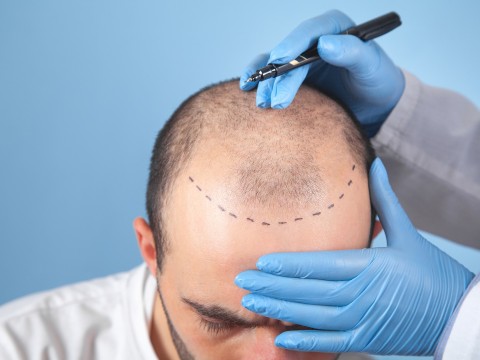DHI Hair Transplant Most Popular
Quote of SE Hair Clinic Seda Erdogan
DHI Hair Transplant
Hair loss is a frequent problem confronted by millions worldwide, and to such maladies, many methods are invented. Among the advanced techniques invented for dealing with hair loss is DHI, standing for Direct Hair Implantation. This method grew very fast in popularity because of its precision and effectiveness. DHI differs from other previously known techniques by providing more subtilization in restoring lost hair, while it claims natural results with less post-operative downtime.
DHI hair transplanting is the direct implantation of hair follicles into the scalp without the need for any prior preparation of the recipient site or any incisions. Some of the major benefits of this technique include shorter recovery time and better survival rates for grafts. This article focuses specifically on the procedure and the pros and practical considerations involved in DHI hair transplantation in detail, for which it will help you understand whether this method will work for you.
What Is DHI Hair Transplantation?
Abbreviated mostly as DHI, Direct Hair Implantation is an advanced hair restoration technique whereby hair follicles are extracted from the donor area directly into the recipient area. However, unlike other traditional methods of hair transplantation, DHI does not require the preparation of recipient sites for implantation. It uses a more specific tool known as the Choi pen, which inserts hair follicles directly into the scalp and thus allows precision in terms of regulation of the angle and direction of each graft. This is also done in hopes of creating a natural hairline and full coverage with minimal scalp trauma.
How Does the DHI Procedure Work?
DHI starts with hair follicle extraction from the donor site, usually from the back of the head. Using the micro-punch tool, individual follicles are taken out without making a single large incision. The extracted follicles will be loaded into the Choi pen, which was developed to make simultaneously high-accuracy incisions and implant the follicles into the reception sites. This reduces the time taken by the follicles outside the body, ensuring a better survival rate and a higher possibility of success.
DHI vs. FUE
Direct Hair Implantation (DHI) and Follicular Unit Extraction (FUE) both are very popular techniques when it comes to hair transplantation; however, the approach both of them take is very different. Both methods take out the follicles one by one, though the main difference lies in the implanting process. FUE bears the necessity of site creation beforehand, prior to loading with the follicles. This results in longer recovery periods and less accuracy. In contrast, DHI employs the use of a Choi pen in site creation and implantation of the follicles at the same time. It would mean, in this case, that the operation would flow more smoothly and have better results.
Benefits of DHI Hair Transplantation
Advantages include the least recovery time; the procedure is minimally invasive, with no large incisions being made. Moreover, Choi's pen offers better precision of creating a more natural hairline and graft placement. The way it is used provides less damage to the surrounding tissue, which also speaks for less risk of scarring and a faster return to one's daily life. As a result, it is gaining popularity among people who require effective hair restoration services.
Possible Side Effects and Risk
In the general view, DHI hair transplantation is safe; however, it also has some side effects and risks. The most common side effects include temporary swelling, redness, and minuscule discomfort at the donor and recipient site, while other complications are uncommon, which include those of infection and poor graft survival.
Post-Procedure Care and Recovery
The right type of post-procedure care is involved for the best type of results in DHI hair transplantation. Generally, patients are advised to avoid strenuous activity for a few weeks and to stay under the shade for some weeks after the procedure due to the event of direct sunlight. They should gently wash the area and avoid any type of scratching or rubbing of the scalp to ensure it heals well. Care according to guidelines is taken to avoid any type of complication and to allow the growth of the newly planted hair follicles.
- Health Insurance
-
Accommodation
- Online Healthy Life Assistant 9/5
- Post - Experience Follow Up 6 Month
-
Extra Privileges
- Transfer

- Health Insurance
-
Accommodation
- Online Healthy Life Assistant 24/7
- Post - Experience Follow Up 1 Year
- Pre-Treatment Doctor Consultation
-
Extra Privileges
- Transfer

 Private
Private
- Health Insurance
- Healthy Life Butler
- Post - Experience Follow Up 2 Year
- World-Famous Doctor Consultation
-
Extra Privileges
No suitable hotel found for the relevant dates!
* Price varies depending on extra and upgrade selections.
DHI, or Direct Hair Implantation, is a modern technique for hair transplantation. In this method, hair follicles are taken from a donor area and directly placed in the area where hair loss or baldness is experienced. What makes DHI unique is that it skips the step of creating pre-made incisions.
DHI is suitable for people dealing with hair loss or baldness. The best candidates have a stable donor area with enough hair follicles. An examination by a qualified hair transplant specialist is done to determine if someone is eligible for the procedure.
DHI stands out from traditional methods because it doesn't require pre-made incisions. Instead, a special pen-like device called a Choi pen is used to directly implant hair follicles, providing more precision and a natural-looking outcome.
The duration of a DHI procedure depends on how much hair needs to be transplanted. On average, it takes 4 to 8 hours. The careful process ensures each hair follicle is placed precisely for the best results.
Most patients can get back to their usual activities within a few days. Initially, the implanted hair follicles may fall out, but new hair growth begins within a few weeks. Full recovery might take a few months.
It may take up to a year to see the complete growth and thickness of the transplanted hair. The growth varies among individuals. In the first month, some of the transplanted hair may fall out, which is normal. You can expect about 60-70 percent of your hair after 6 months, and the best final result is usually seen around 10 to 12 months after the surgery. The critical period to care for the grafts is within the first seven days or two weeks after the surgery.
- Precise and Natural Results: DHI provides accurate and natural-looking outcomes for hair transplant. - Minimal Scarring: Since DHI doesn't involve incisions, scarring is minimized. - Faster Healing: Healing is quicker compared to traditional methods. - Reduced Discomfort: Postoperative discomfort is lessened. - No Need for Shaving: There's no requirement to shave the donor area. - Versatility for Hair Types: Suitable for various hair types and textures.
Yes, both men and women experiencing hair loss can undergo DHI.
The transplanted hair follicles are permanent, but individual factors and postoperative care influence how long the results last.
Yes, DHI is suitable for diverse hair types, including Afro-textured hair, thanks to its precise implantation technique.
After the initial healing period, wearing a loose-fitting hat is generally allowed, following specific care instructions.
A stay of 3 to 5 days is recommended.
Both DHI and FUE involve extracting grafts individually, but the key difference is in the transplantation step. DHI eliminates the need for opening channels, making it less invasive. The ready-to-transplant grafts are directly implanted using a special device called the DHI pen or Choi pen.
DHI procedures are done under local anesthesia, reducing pain and discomfort during the surgery. After the procedure, there might be some minor discomfort, but this can be managed with medications prescribed by the doctor.
DHI can effectively camouflage or repair scars from previous hair transplants, including older methods, providing a more natural appearance due to its precision.







